What’s the point of having dinosaurs around if they can’t terrorize people? That’s the lesson that Jurassic World reminded us of with its $1 billion worldwide haul. But tinkering around with amber-trapped bugs is just one of the ways authors and filmmakers have made dinosaurs part of our world. Here’s a quick primer on the major ways scifi creators put people within reach of dinosaurian jaws and claws.
Prehistoric People
This is pretty much the creationist option. Rather than moving our favorite non-avian dinosaurs up in time to meet us, it’s mashing tens of millions of years into a temporal slurry where—more often than not—tail-dragging theropods end up chasing women clad in skimpy sabercat-skin bikinis. One Million Years B.C. and When Dinosaurs Rules the Earth are the most famous entries in this sub-sub-sub-genre, but there are plenty of others on the theme ranging from The Flintstones and Marvel’s Savage Land to the tragically unfunny Ringo Starr (?!) vehicle Caveman.
Robots
This one’s a bit of a cheat, but it’s worth mentioning if only because of the insanity that is Tammy and the T. rex. Here’s the first line of the plot summary: “An evil scientist implants the brain of Michael, a murdered high school student, in an animatronic Tyrannosaurus.” I know I’ve sometimes wished to be a dinosaur, but not like that.
Genetic Engineering
We all know what popularized this method. Billy and the Clone-o-saurus. Kidding. Kidding. Michael Crichton could have turned Jurassic Park into a warmed-over version of Westworld, but part of his story’s appeal is that he came up with a way to resurrect dinosaurs that sounded almost plausible. It’s never actually going to work, but it was close enough for scifi and still looms over discussions of whether or not we can, or should, bring extinct animals back to life.
Not that Jurassic Park was the first or only story to consider how ancient DNA might be extracted and used to make living dinosaurs. Author John Brosnan’s Carnosaur beat Crichton to the ancient DNA punch by six years—with its own cinematic adaptation that debuted the same year as Jurassic Park—and the G.I. Joe episode “Primordial Plot” trod some of the same ground in 1985. The Jurassic Park franchise still dominates over all the other stories, though, and given that they’ve got the money to “spare no expense” who knows what weird monstersaurs Universal will cook up as the series’ scientists start to fiddle around with dino DNA.
Lost Worlds
This was the original dinosaur genre. On uncharted islands, in the center of the Earth, in dense jungles, and other locales, dinosaurs have often been brought back to us by assuming that they’ve always been there. The first to try out the device was James De Mille’s 1888 serial A Strange Manuscript Found in a Copper Cylinder, and authors including Frank Mackenzie Savile (Beyond the Great South Wall) and Arthur Conan Doyle (The Lost World) picked up the trend. And even though “lost world” stories eventually faded in popularity, giving way to time travel tales, they’re still a scifi staple. James Gurney’s Dinotopia envisions an isolated land where dinosaurs and people mostly live in peace, Sharon Farber’s “The Last Thunder Horse West of the Mississippi” imagined what the “Bone Wars” between O.C. Marsh and E.D. Cope would have been like had they been competing over a living dinosaur, the ‘meh’ movie The Dinosaur Project played on cryptozoological nonsense that there are Mesozoic creatures living in the Congo, and, despite its flaws, the 2005 remake of King Kong took a creative step beyond to imagine how non-avian dinosaurs would have kept evolving if they had survived for 66 million years.
Deep Freeze
This one could probably be a subset of the Lost World genre, but the trope is strong enough to merit its own category. Freezing a prehistoric creature or its eggs has been a quick and easy way to bring it to the present without having to explain how the monster survived for millions upon millions of years. The fictional Rhedosaurus that stars in The Beast From 20,000 Fathoms got its stay of execution this way, as did the perpetually-hungry, irradiated Tyrannosaurus in Leigh Clark’s Carnivore. Science is silent on how long it would have taken Mesozoic dinosaurs to overcome freezer burn, however.
Alternate Histories/Dimensions
The less said about Theodore Rex, the better.
Time Travel

What better way to see dinosaurs than in their own time? But there are two flavors of this type of story. Most—especially involving big game hunters after the deadliest prey yadda yadda yadda—involve going back to see dinosaurs as they were, like in Ray Bradbury’s classic “A Sound of Thunder,” Poul Anderson’s darkly clever “Wildcat,” and Arthur C. Clarke’s “Time’s Arrow.” The flipside is when dinosaurs come to visit us through some cosmic accident. James David’s Footprints of Thunder series brings the Mesozoic to the present by way of the unintentionally comfy-sounding “time quilt”, and the ludicrously gory Dinosaurs Attack! card series set the likes of Allosaurus on the modern world through an unspecified science mishap that replaces parts of the modern world with their Mesozoic counterparts. Regardless of method, though, if you ever find yourself on a tyrannosaur’s turf just remember that they can’t definitely see you even if you don’t move.
Space Dinosaurs
In concept, at least, dinosaurs… in… spaaaaace is more or less a retread of the time travel idea. If other planets host life, the logic goes, then maybe those organisms are on the same evolutionary trajectory as Earth’s. Find the right planet and you’re basically travelling through time. Video rental store staple Planet of Dinosaurs brought the idea to life through stop-motion monsters that more or less encapsulate dinosaurs before the Dinosaurs Renaissance gave them a major overhaul. And I guess Planet Raptor would count as another entry in this category, too, even if “Hey, what if there were raptors on other planets?” is more pitch than explanation.
Postapocalyptic Dinosaurs
I’m somewhat surprised that we haven’t seen movies on this theme lately. Zombies are pretty much done at this point. It’s time for dinosaurs to have a turn at running through the rubble. In any case, the schlocky version of this idea is embodied by the mutated beasts in 1990’s watch-at-your-own-risk film A Nymphoid Barbarian in Dinosaur Hell, while Mark Schultz’s Xenozoic Tales is a much more thoughtful and detailed story involving dinosaurs and other prehistoric critters that reclaim the planet after humanity basically destroyed itself with environmental catastrophe. The dinosaurs don’t just pop up from nowhere. Schultz’s revived saurians are the products of a primordial soup starter set that gets a little out of hand and replays the evolutionary tape as if evolution knows dinosaurs were the pinnacle of life. No argument there.
Brian Switek is the author of My Beloved Brontosaurus (out in paperback from Scientific American/Farrar, Straus and Giroux) and Written in Stone. He also writes the National Geographic blog Laelaps.










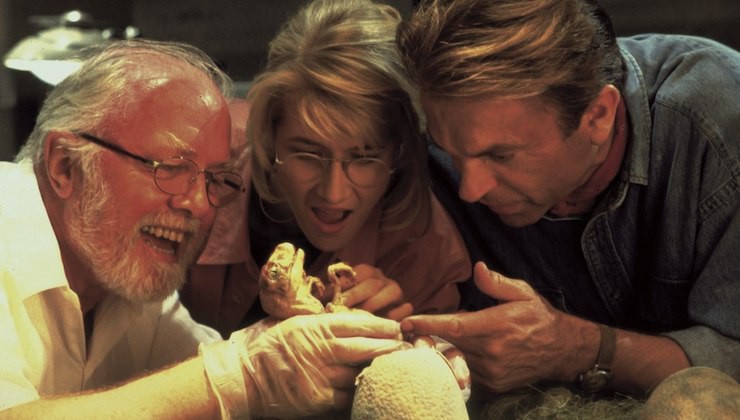
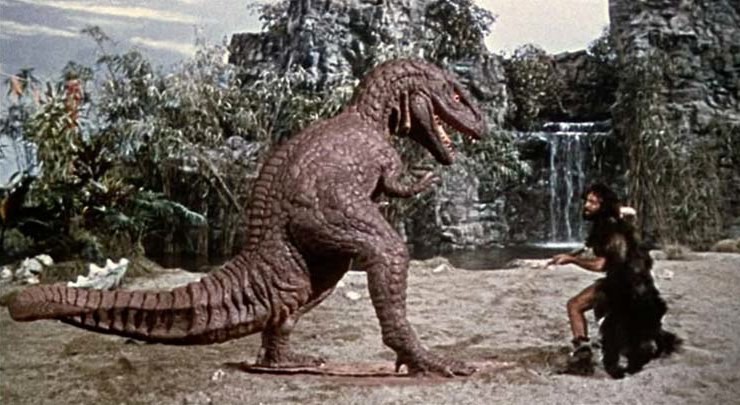
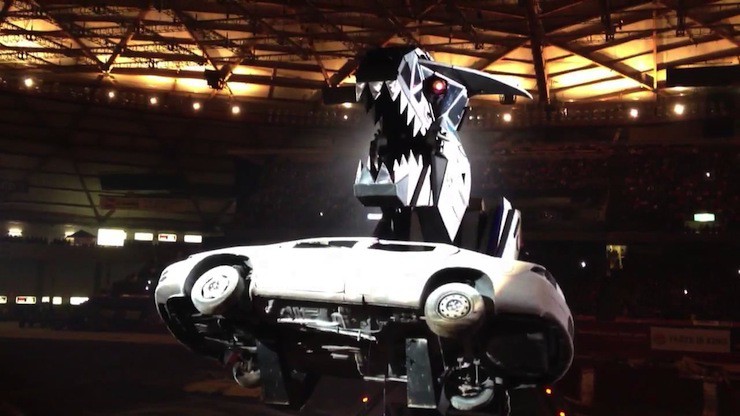
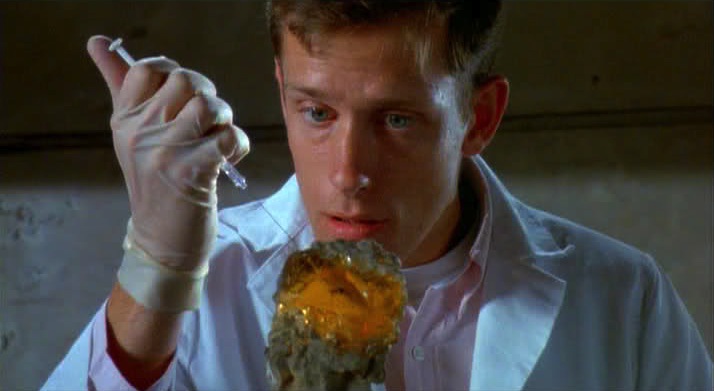
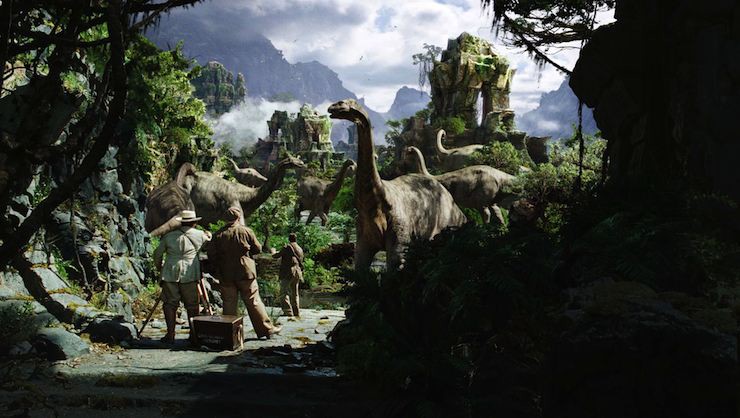
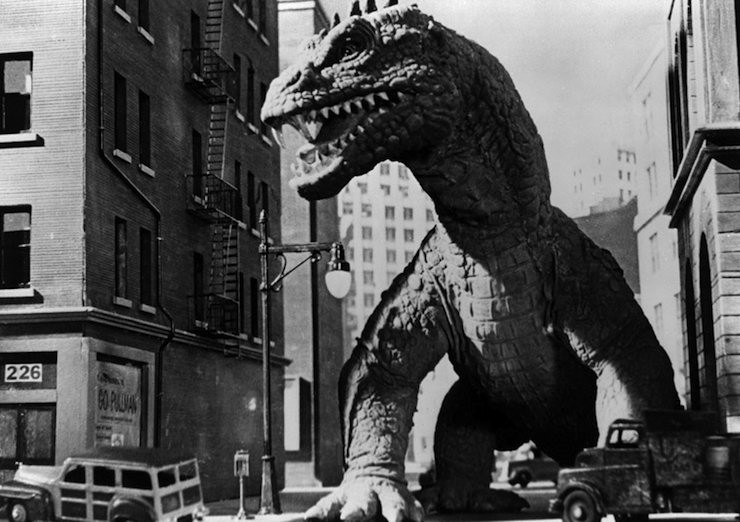
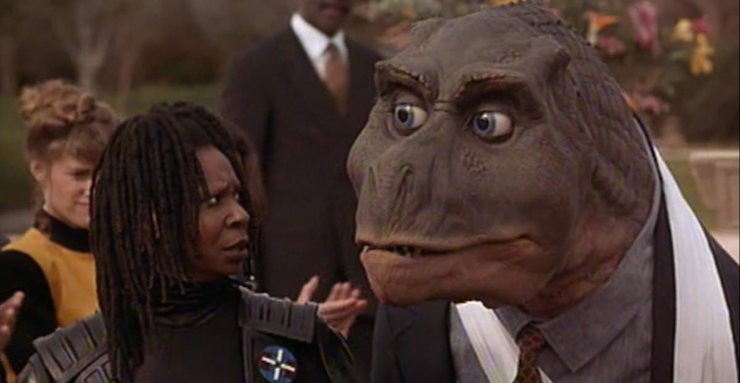
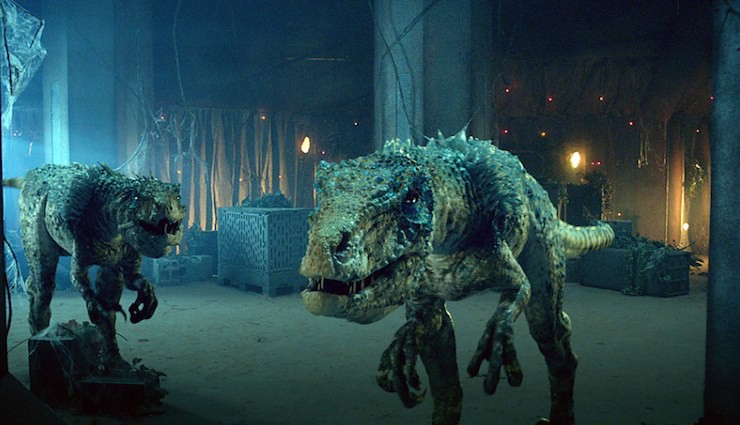

Re the “time travel” category, there’s also the Doctor Who serial “Invasion of the Dinosaurs,” from the Third Doctor (John Pertwee) era, wherein a radical group transports dinosaurs out of the past into the present-day world in order to destroy modern civilization.
Also, the recent Doctor Who episode “Dinosaurs on a Spaceship,” in which living dinosaurs are discovered on an alien spacecraft that had visited the Earth millions of years earlier.
Alternate Histories/Dimensions:
The less said about the Super Mario Bros. movie, the better.
“Author John Brosnan’s Carnosaur beat Crichton to the ancient DNA punch by six years—with its own cinematic adaptation that debuted the same year as Jurassic Park”
The Judge Dredd story “The Cursed Earth” did it six years earlier again, in 1978, iirc: I’m not aware of an instance earlier than that.
But does Super Mario Brothers beat Theodore Rex?
Do we need an extra category for dinosaurs that are both evolved and time traveling? I’m mainly thinking of the Silurians, but there should be more examples, right?
Alternate histories, time travel, and space dinosaurs:
The Star Trek TOS novel First Frontier was quite enjoyable, IMO. Dinosaurs get transplanted to a new world, evolve sentience, develop space travel, and go back in time to blow up the killer asteroid. Kirk and Co. get stuck in the new timeline and have to set things right